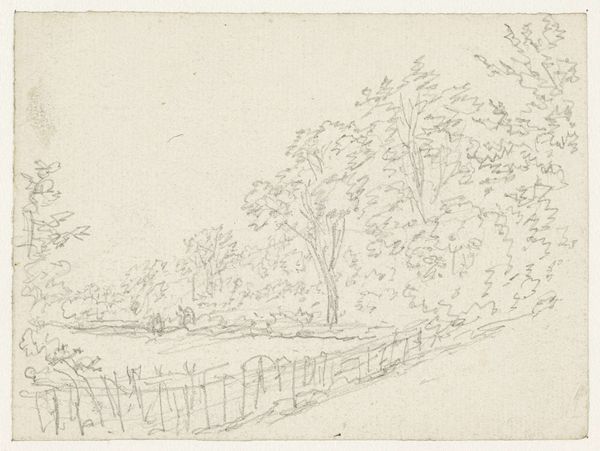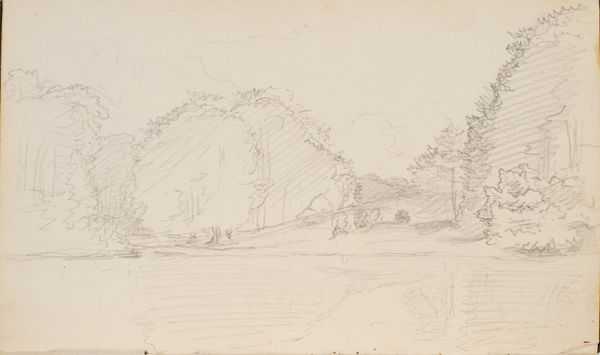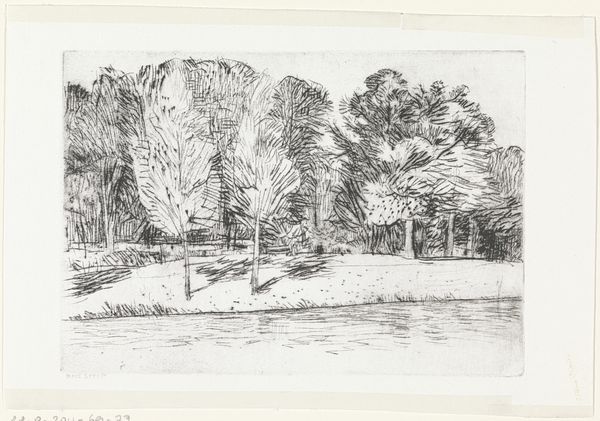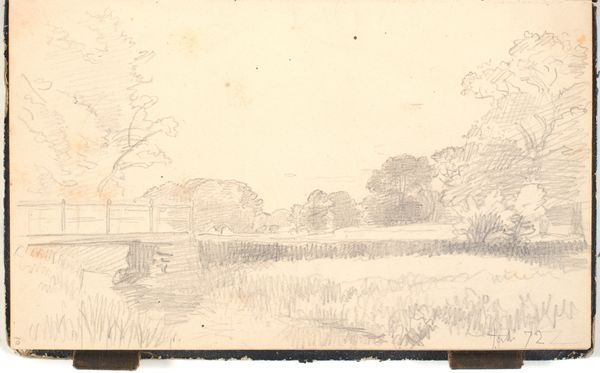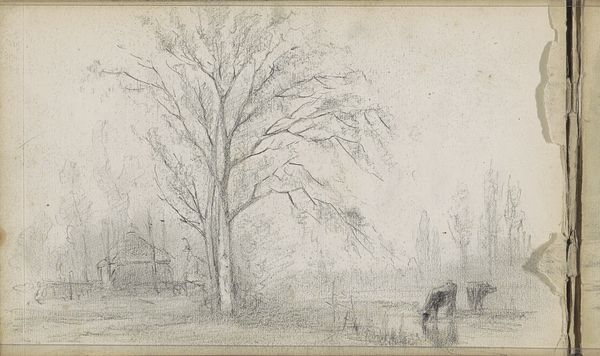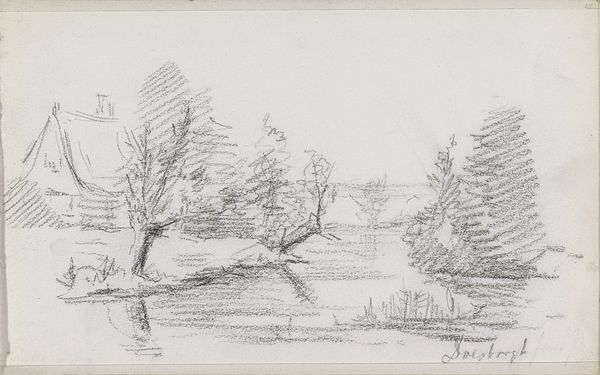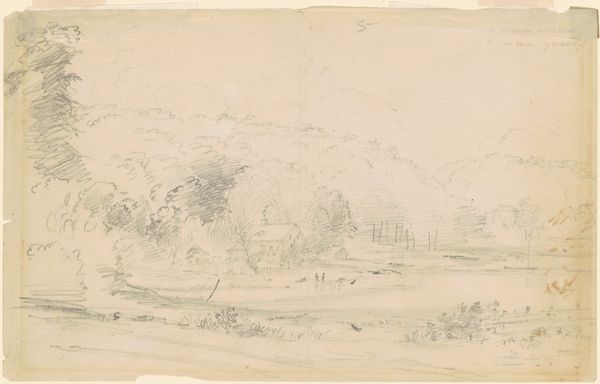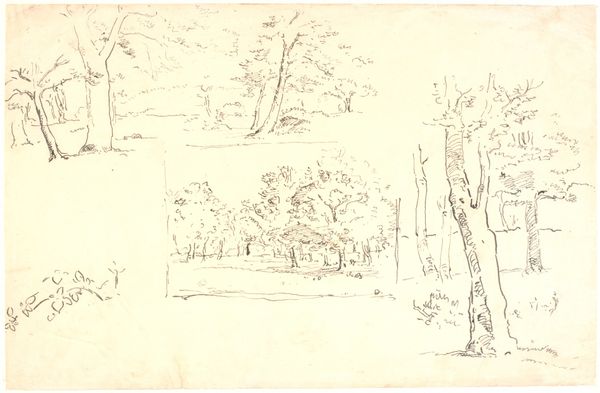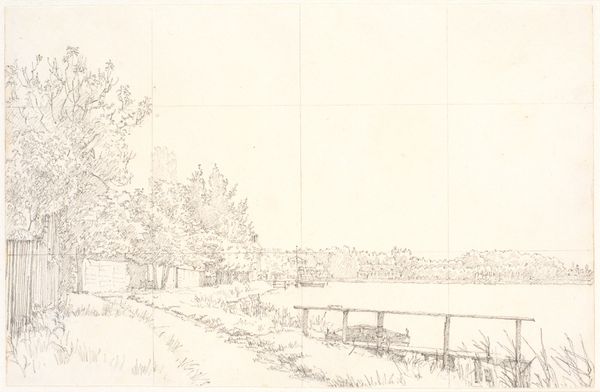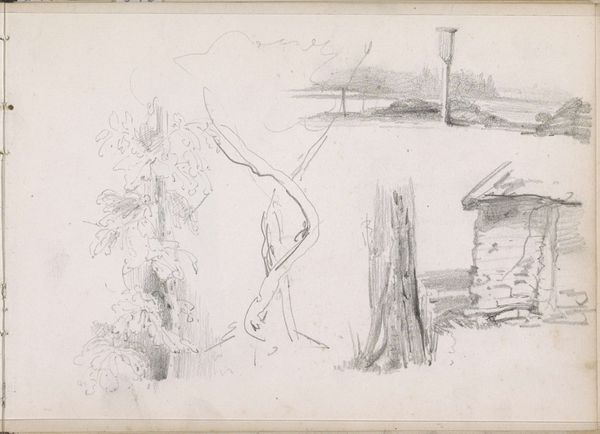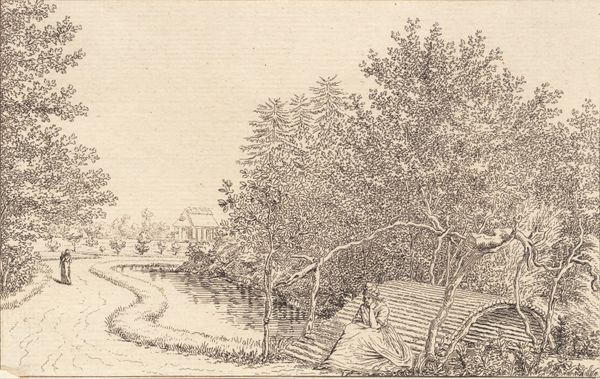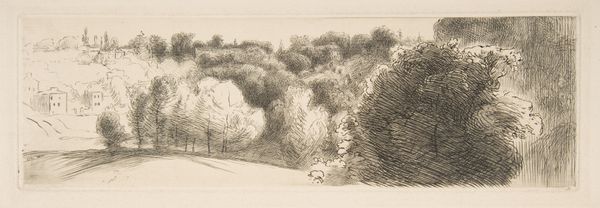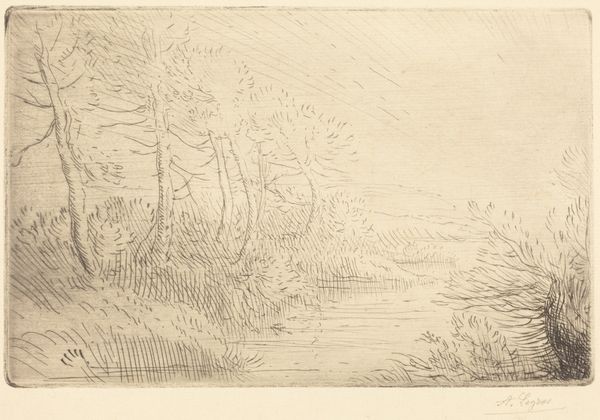
drawing, pencil
#
drawing
#
pen sketch
#
landscape
#
etching
#
form
#
pencil
#
line
#
realism
Copyright: Rijks Museum: Open Domain
Curator: Welcome. We're looking at "Open gate to a meadow", a drawing created by Bramine Hubrecht sometime between 1865 and 1913. It’s rendered in pencil, employing techniques of drawing and etching. Editor: My immediate impression is one of quiet pastoral simplicity, though I note the roughness, the almost hurried quality of the line work—nothing feels overly polished or idealized here. Curator: Precisely. Consider the strategic use of line. The fence, built of roughly hewn wooden members, doesn't just enclose space, it carves up planes of visual texture that almost gives the field itself materiality. Editor: Speaking of materials, think about the actual labor implied in erecting such a fence. The sourcing of the wood, the manual effort. It contrasts sharply with what was once called 'high art' which often shies from these messy processes of raw material extraction and formation. The composition hints to me about working-class, the artist's sensitivity towards working fields and agricultural scenes. Curator: That's insightful. And, from a more formal perspective, the artist leads the eye. The linear arrangement subtly divides the scene, almost like the foreground presses us against that space, inviting contemplation of the meadow just beyond the rough barrier, that serves a metaphorical divide that reminds us how this image stands outside traditional landscape representation and form, creating that almost symbolic form-centered viewing experience. Editor: This piece, however, offers so much about materiality beyond representation; to create a partition of ownership of lands, farmers have to source locally available raw materials such as wooden logs and branches; the aesthetic lies in that material selection in direct contact with social issues that involves land partition and agricultural labor in contrast with conventional boundaries between high art and labor. Curator: Perhaps we can appreciate both: the tangible making of this scene, along with Hubrecht’s skillful arrangement, the considered geometry that speaks beyond just rural fences. Editor: Certainly, it invites us to look beyond art historical formalism, at the work's relationship with labor and process involved in making of our everyday infrastructures. Curator: An exploration that transcends the merely representational—allowing us to recognize, through formal attributes, this relationship and partition, form that becomes material and contextual. Thank you for engaging in such considerations.
Comments
No comments
Be the first to comment and join the conversation on the ultimate creative platform.
